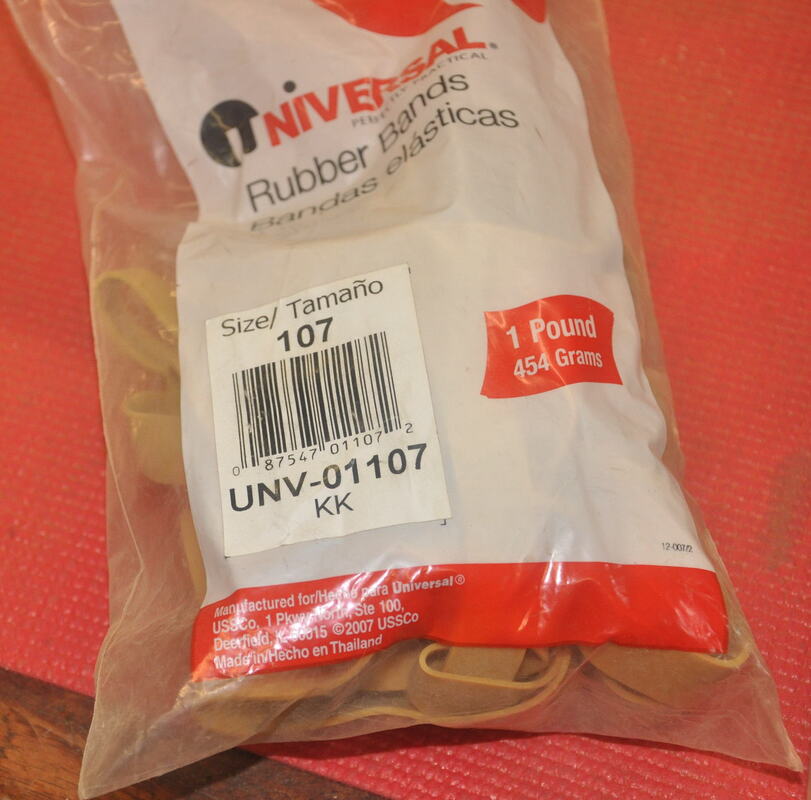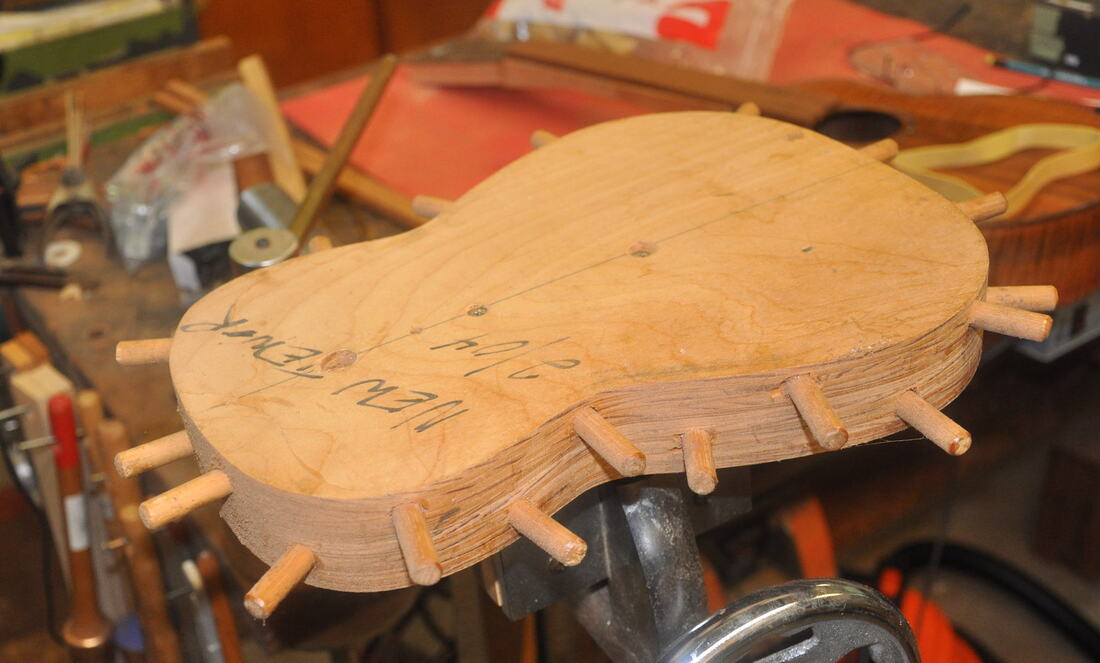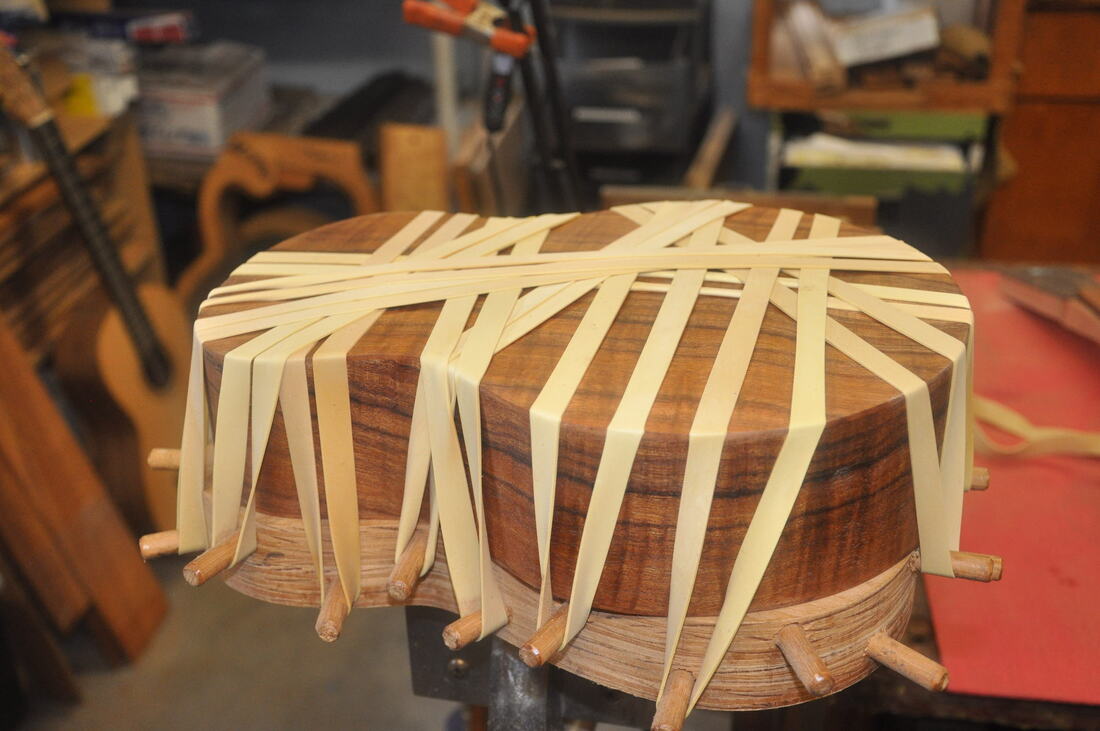Applying Wood Bindings
This is a temporary page that shows the jigs I use to apply wood bindings. IMO, tape is not strong enough to do a good job with getting tight fitting wood bindings. To get a tight fit with tape, the binding needs to be bent perfectly to the shape of the instruments, and that often is not easy to do. These #107 rubber bands are easy to use and easily adjustaible to apply pressure exactly where you need it. For guitars the same rubber bands will work, but you have to loop them together 2 at a time to get the length you need. With the rubber bands, the bindings still need to be bent very close to the right shape. but rubber bands will pull them much tighter than tape ever will. Also, with the rubber bands you can easily check under them to see if the binding is tight. Shifting the bands a little allows you to clean up some of the excess glue before it dries.If you are lucky enough to have a stationary store near you, you can get them there. Otherwise, get them on Amazon.
Here is the binding jig. The reason I use 2 pieces of stacked and glued plywood for the base is that the plywood layers can separate when you drill the peg holes using only 1 piece . The first jigs I made using nails instead of wood dowels, but the nails tended to cut the rubber bands. I now use 1/4" or 3/8" (preferred) wood dowels. The jig has a wood cleat on the botton for holding in a vise. The base should be cut to the actual shape of your instruments, so that the bands can pull straight down on the binding. You'll figure that out when you use the jig. I glue 1 side at a time, so it takes 4 sessions to complete the job. With Titebond, you can remove the rubber bands in a couple of hours at most, so the entire uke can be done in a day or 2.
I don't have an instrument at the binding stage right now, so this is just a mock up. I think the reader will get the idea.There are other tricks to get clean binding jobs and I'll try to post them next time I do binding.


